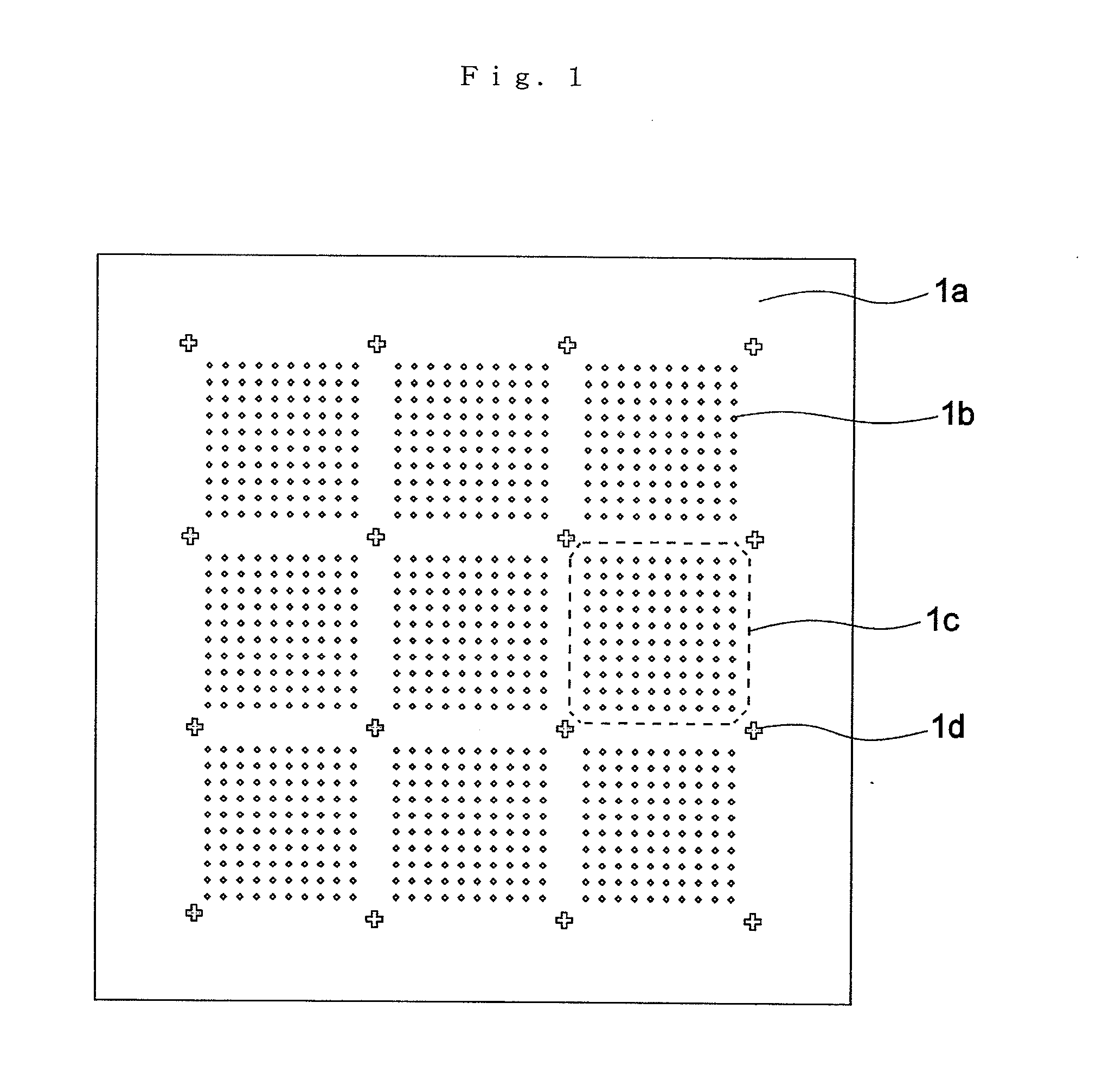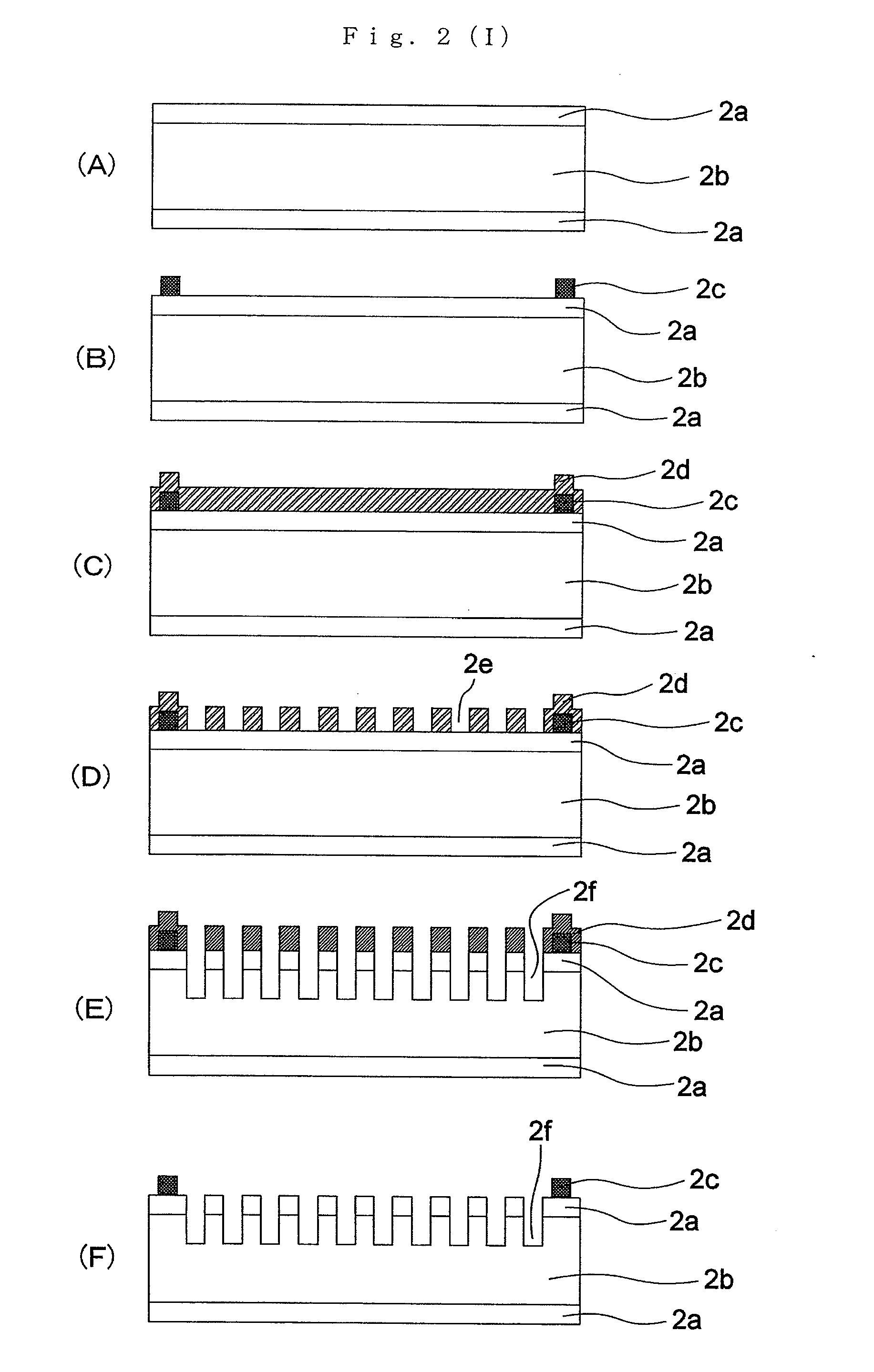Microwell array chip and method of manufacturing same
a microwell array and array technology, applied in the field of microwell array chips, can solve the problems of cell sorter, expensive and complex method, and inability to identify individual antigen-specific lymphocytes within the group of lymphocytes
- Summary
- Abstract
- Description
- Claims
- Application Information
AI Technical Summary
Benefits of technology
Problems solved by technology
Method used
Image
Examples
embodiments
Embodiment 1
(Fluorescent Marker)
[0250]FIG. 1 is an example of a Aspect of implementing the device of Aspect I of the present invention.
[0251]FIG. 1 shows a microwell array chip in which multiple microwells 1b have been formed on a substrate surface 1a of silicon material. Microwells 1b form clusters 1c of suitable numbers of units (for example, 10×10=100) to facilitate position identification. One use of the present microwell array chip is the introduction of a cell to which a fluorescent substance has been added into each well for evaluation, and the determination of fluorescent emission. In this process, those cells not emitting fluorescence cannot be observed because observation by fluorescence microscope or fluorescence scanner is conducted with specifications based on the wavelength of fluorescence. Accordingly, as shown in FIG. 1, a minute marker 1d of a fluorescent substance is formed between the individual clusters.
[0252]The method of manufacturing these markers is given bel...
embodiment 2
(Reflective Marker)
[0268]FIG. 3 is an implementation Aspect of a reflective marker 3d that is observable by observing scattered light with a fluorescence microscope or fluorescence scanner by forming dips and rises on silicon substrate 3a. It is used as a marker for identifying the positions of clusters of multiple microwells 3b arrayed on silicon substrate 3a. By forming indentation 3e by etching or the like on the substrate and directing a fluorescence excitation beam to an observation device by means of irregular reflection, it is possible to identify the position of the indentation.
[0269]FIG. 4 shows the principle involved. For the surface of a substrate 4a without anything, such as the dips or rises shown on the left side of the figure, no excitation light enters the observation device due to full reflection. However, when the indentations on the right side scatter the excitation beam radially, reflected light enters the optical system of the observation device and can be ident...
embodiment 3
A Lip-Structure Embodiment
[0279]FIG. 7 shows a microwell structure fabricated based on Aspect II of the present invention.
[0280]The present structure can be achieved by selecting an upper thin film of a material that is easy to process with a semiconductor substrate, resin substrate, or the like. The microwells 13 that are formed on the surface of (100) surface silicon substrate 11 measure from several micrometers to several tens of micrometers in both opening diameter and depth. The surface on which no wells are formed is covered with a thin film layer 12′ in the form of an oxide film, metal film, or the like. The substrate is etched to form well openings 13a, in which are found eave-shaped protrusions 14 of thin film layer 12′. The thickness of thin film layer 12′ is controlled to from several hundred nanometers to several micrometers during formation. Eave-shaped protrusions 14 formed of thin film layer 12′ are achieved by an etching method in which thin film layer 12′ is etched ...
PUM
| Property | Measurement | Unit |
|---|---|---|
| diameter | aaaaa | aaaaa |
| diameter | aaaaa | aaaaa |
| depth | aaaaa | aaaaa |
Abstract
Description
Claims
Application Information
 Login to View More
Login to View More - R&D
- Intellectual Property
- Life Sciences
- Materials
- Tech Scout
- Unparalleled Data Quality
- Higher Quality Content
- 60% Fewer Hallucinations
Browse by: Latest US Patents, China's latest patents, Technical Efficacy Thesaurus, Application Domain, Technology Topic, Popular Technical Reports.
© 2025 PatSnap. All rights reserved.Legal|Privacy policy|Modern Slavery Act Transparency Statement|Sitemap|About US| Contact US: help@patsnap.com



